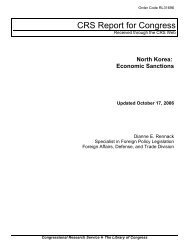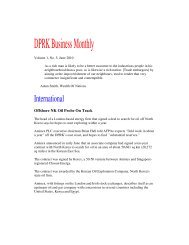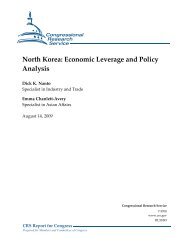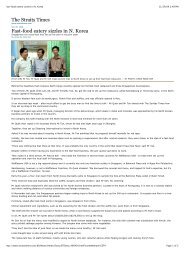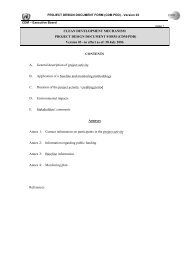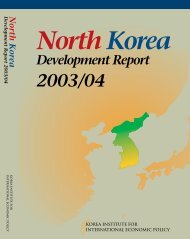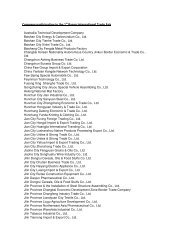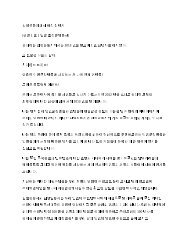North Korean Policy Elites - Defense Technical Information Center
North Korean Policy Elites - Defense Technical Information Center
North Korean Policy Elites - Defense Technical Information Center
You also want an ePaper? Increase the reach of your titles
YUMPU automatically turns print PDFs into web optimized ePapers that Google loves.
The factional struggles in <strong>North</strong> <strong>Korean</strong> history have come in two varieties: struggles for<br />
power and struggles for influence. When the leader is in full control, factionalism is restricted to<br />
the second echelon, but this can be transformed into warlordism when the system comes under<br />
duress at the top. At present, factional politics in <strong>North</strong> Korea appear to take place at the second<br />
echelon, where officials compete with each other to secure influence with Kim Chong-il.<br />
Flow of <strong>Information</strong><br />
Kim Chong-il has taken great steps to ensure that he is the most informed member of the<br />
leadership and, at the same time, to restrict access for others. He is the only individual within the<br />
regime who has unrestricted access to foreign media. His sources of information include:<br />
• An information management system whereby all documents are routed through his<br />
personal secretariat<br />
• An extensive surveillance apparatus<br />
• Alliances with key figures within the regime, such as his sister, Kim Kyong-hui<br />
• Foreign intelligence gathering apparatus (Ministry of Foreign Affairs, KWP’s<br />
International and External Liaison departments)<br />
• “Third Floor” operatives<br />
As for the rest of the leadership, information necessary to run the day-to-day affairs of the<br />
<strong>North</strong> <strong>Korean</strong> regime is highly compartmentalized and frequently monitored. This leads to a<br />
system of half knowledge and an illusion of being informed. Those at the top of the leadership<br />
have access to more sensitive information about the regime. But, even the most senior leaders are<br />
restricted in the amount of access they can have on issues related to the security of the regime.<br />
Sources of internal information available to leaders include:<br />
• Staff-prepared reports<br />
• Unofficial elite network<br />
• <strong>Information</strong> technology (telephones, Internet, and Intranet)<br />
• Ministry of Foreign Affairs and Chosun Central News Agency-routed reports<br />
• Limited access to the <strong>North</strong> <strong>Korean</strong> diplomatic community<br />
Implications for the Future<br />
The long-term survival of the Kim Chong-il regime will be determined by Kim’s ability<br />
to control the <strong>North</strong> <strong>Korean</strong> elite. Relying on a strategy of divide-and-rule and internally<br />
restricting the flow of information, he has been able to maintain his grip on the regime. But, this<br />
strategy has the tendency to create cleavages, which will increasingly make it difficult to manage<br />
all the power groups/elites. As pressure on the regime grows, three factors will be critical:<br />
legitimacy, system vulnerabilities, and warlordism.<br />
II-S-2



